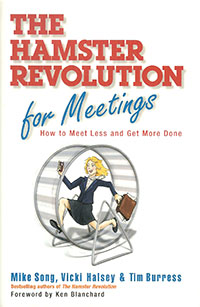 Giving feedback to someone is a “moment of trust” – an opportunity to either build or erode trust in the relationship. If you deliver the feedback with competence and care, the level of trust in your relationship can leap forward. Fumble the opportunity and you can expect to lose trust and confidence in your leadership.
Giving feedback to someone is a “moment of trust” – an opportunity to either build or erode trust in the relationship. If you deliver the feedback with competence and care, the level of trust in your relationship can leap forward. Fumble the opportunity and you can expect to lose trust and confidence in your leadership.
For most leaders, giving feedback is not our most pleasurable task. Having been on both sides of the conversation, giving feedback and receiving it, I know it can be awkward and uncomfortable. However, I’ve also come to learn and believe that people not only need to hear the honest truth about their performance, they deserve it. Most people don’t go to work in the morning and say to themselves, “I can’t wait to be a poor performer today!” We do a disservice to our people if we don’t give them candid and caring feedback about their performance.
The key to giving feedback that builds trust rather than destroys it is to have a plan in place and a process to follow. You want people to leave the feedback discussion thinking about how they can improve, not focused on how you handled the discussion or made them feel.
People will forget what you said. People will forget what you did. But people will never forget how you made them feel. ~Maya Angelou
Before Giving Feedback
Before you have the feedback discussion, it’s important to do three things:
- Assess the quality of your relationship – What is the level of trust and mutual respect in your relationship? If the level of trust is low, work on building it. If there has been a specific breach of trust, work on healing the relationship before giving feedback. If the feedback receiver doesn’t trust and respect you, your message will be perceived as one more way “you’re out to get them.”
- Diagnose the situation and clarify your motives – Clarifying your motive for giving feedback and the results you want to achieve will help you give the right kind of feedback. Is your motive to simply give information and let the receiver decide what to do with it, or are you making a request or demand and expecting the receiver to do something different? Be clear on the outcome you’re trying to achieve, otherwise your feedback will be muddled and ineffective.
- Make sure there is/was clear agreements about goals, roles, and expectations – Did you fulfill your leadership obligations by setting the person up for success with a clear goal? If the goal isn’t/wasn’t clear, then reset or renegotiate the goal. If circumstances beyond the employee’s control have changed to inhibit goal achievement, work on removing those obstacles, revisit the goal, or engage in problem solving.
Feedback Guidelines
When you have the feedback discussion, you’ll be much more successful if you follow these guidelines:
- Give feedback on behaviors that can be changed, not on traits or personality – Behavior is something you can see someone doing or hear someone saying. Telling someone they need to be more professional, flexible, or reliable is not helpful feedback because it’s judgmental, nonspecific, and would likely create defensiveness. Being specific about the behaviors the person needs to use to be professional, flexible, or reliable will give the receiver a clear picture of what he/she needs to do differently.
- Be specific and descriptive; don’t generalize – Because giving feedback can be uncomfortable and awkward, it’s easy to soft pedal it or beat around the bush. Think of giving feedback as the front page newspaper article, not the editorial. Provide facts, not opinions or judgments.
- Be timely – Ideally, feedback should be delivered as close as possible to the time of the exhibited behavior. With the passage of time, perceptions can change, facts and details can be forgotten, and the likelihood of disagreement about the situation increases. Above all, don’t save up negative feedback for a quarterly or yearly performance review. Blasting someone with negative feedback months after the fact is leadership malpractice.
- Control the context – Timing is everything! I’ve been married for nearly 26 years and I’ve learned (the hard way) the value of this truth. Choose a neutral and comfortable setting, make sure you have plenty of time for the discussion, be calm, and pay attention to your body language and that of the receiver. Don’t let your urgent need to deliver the feedback overrule common sense. Find the right time and place to deliver the feedback and the receiver will be more receptive to your message.
- Make it relevant and about moving forward – Rehashing or dwelling on past behavior that isn’t likely to recur erodes trust and damages the relationship. Keep the feedback focused on current events and problem solving strategies or action plans to improve performance. Staying forward-focused also makes the conversation more positive in nature because you’re looking ahead to how things can be better, not looking back on how bad they’ve been.
Along with these five guidelines, it’s important to solicit input from the feedback receiver to hear his/her viewpoint. You may be surprised to learn new facts or gain a better understanding of the story behind the situation at hand. Don’t presume to know it all when having the feedback discussion.
Giving feedback doesn’t have to be scary and painful. Most people know if they’ve messed up or are falling short in a certain area, even if they don’t like to admit it. The way in which the leader delivers the feedback can have more impact than the feedback itself. You can deliver the message in such a way that your people leave the meeting committed to improving their performance because they know you care about them and their success, or your delivery can cause them to leave feeling wounded, defeated, and less engaged than when they arrived. Which will it be?
It’s your moment of trust. Seize it!






